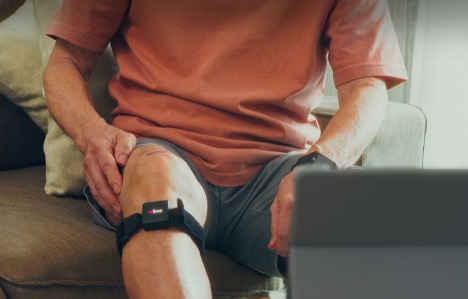
Researchers at Georgia Tech have developed SKINTRONICS – a wearable stress monitor that utilizes fully stretchable, wireless skin-conformal bioelectronics, designed to provide precise readings of heart rate and sweat gland activity via galvanic skin response.
Read more: Ultrasound Wearable Patch Could Provide Early Warning for Heart Attacks and Strokes
Georgia Tech’s thin, conductive film and flexible layered electrodes with nanomembrane sensors create an impressive device that weighs less than 7 g, including its rechargeable battery. Other galvanic skin response wearable monitors may weigh (in volume) six times more than this technology or greater.
Where other devices lack the ability to maintain adequate contact without pressure from a band or strap, this adaptable stress monitor can be applied directly to the skin and fits snugly to the natural curvature of the body at the wrist or shoulder. The bioelectric wearable device is designed for greater comfort—it is soft, thin, and less than 5 mm thick. The durability and performance of the portable stress monitor have been tested to confirm that it can endure the daily wear of its users, reports Georgia Tech.
The quality of the data output of the high-sensitivity nanomembranes in this novel device was also tested and measured to be comparable, if not superior when concurrently compared to two commercially available devices. Georgia Tech’s portable stress monitor is designed to provide more accurate ongoing measurements and delivers an improved wearable design so that cardiac patients, infants in the pediatric intensive care unit (PICU), or even athletes may receive improved health monitoring with greater comfort.
Read more: Janitri’s Wearable Patch Helping to Save Lives of Newborns and Mothers
Stress monitors have evolved significantly from the originally wired electrodes—with limited placement near the palm/fingertips—to the wearable health monitors that multi-task as a pedometer, watch, and extension of the user’s cell phone. Though miniaturization of bioelectronics has improved the technology, the current market of monitors has been unable to break away from the combined plastic and metal frames that require a tight fit with a strap or band to conform to the body’s natural curvature at the wrist or ankle. Research shows that Georgia Tech’s wearable stress monitor brings greater comfort and flexibility without a constricting strap or band while providing accurate data about skin conductance changes, which is a quantifiable measurement of stress.


